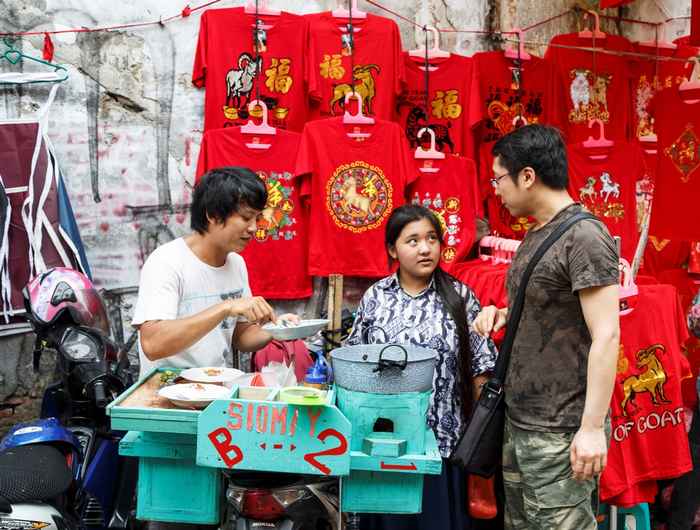Exploring forced assimilation: the resilience of Chinese Indonesians
‘I hope I can do my family justice with this project.’
13 November 2024
Forced assimilation
First of all, what is assimilation exactly? Assimilation occurs when individuals from minority groups voluntarily adopt the language, identity, and cultural norms of the dominant group. For example, immigrants learn the local language or celebrate certain public holidays as a sign of integration. However, forced assimilation is a different process. In forced assimilation, governments or dominant groups pressure minority communities to adopt the majority’s identity through the threat of violence or legal restrictions.

Forced assimilation is a form of political violence, aiming to erase minority identities and silence their voices.Jessica Soedirgo
In Indonesia, the ethnic Chinese minority has faced forced assimilation, especially under the Suharto regime in the 1960s and 70s. Chinese Indonesians were forbidden from speaking Chinese languages publicly, practicing certain cultural traditions, or even using Chinese names. The government’s goal was to integrate Chinese Indonesians into mainstream society, but the effects were the opposite. The strict rules by the government caused harm and discrimination while silencing the voices of Chinese Indonesians. ‘Forced assimilation is a form of political violence, aiming to erase minority identities and silence their voices.’, Jessica Soedirgo explains.
Academic expertise and personal insights
Jessica Soedirgo, Assistant Professor at Political Science, explores political violence and minority identities. As a Chinese Indonesian herself, she brings both academic expertise and personal insight into her Veni awarded project. Soedirgo grew up listening to family stories about how her community navigated life under forced assimilation policies, losing connections to their cultural heritage. Her family’s experiences motivated her to study this area. ‘I hope I can do my family justice with this project.’

Why Chinese Indonesians faced forced assimilation
The forced assimilation of Chinese Indonesians has everything to do with the history of colonialism. Jessica Soedirgo explains: ‘When Indonesia was ruled by the Netherlands, a racial hierarchy placed Europeans at the top and local Indonesians at the bottom, with Chinese Indonesians in between. Chinese Indonesians were given more trade opportunities than the Indonesians. In this way they took an important middleman role in the running of the colonial regime. Besides their economic privileges, the Chinese Indonesians were also socially isolated from the Indonesians. Due to colonial rules they lived in specific communities and needed permits to leave these areas. When Indonesia gained independence, these two factors led to their exclusion from broader society.’
The second factor was the political climate in the 1960s. ‘After Indonesia’s 1965 anti-communist purge, ethnic Chinese Indonesians, associated with China, were viewed with suspicion. Although many Chinese Indonesians had lived in the country for generations, their loyalty was questioned, resulting in policies that forced them to adopt “Indonesian” practices.’
The riots in Indonesia in 1998 started intense political violence affecting Chinese Indonesians. Many faced brutal attacks, including sexual violence and their businesses being burned. In the aftermath, the trauma experienced by these communities highlighted the urgent need for dialogue and reconciliation in the nation.
Current situation of Chinese Indonesians
Today, conditions have improved for Chinese Indonesians. Especially since Indonesia became a democratic country in 1999, according to Soedirgo. ‘After the 1998 riots, a lot of forced assimilation laws had been repealed. The ethnic Chinese identity slowly returned in the Indonesian public sphere. Chinese New Year was celebrated again and Chinese Indonesians were running for political office.’

However the period of discrimination during Suharto continued to resonate throughout the nation. Chinese Indonesians remain cautious about asserting their political voice, as the memory of forced assimilation lingers.
Understanding resilience and cultural survival
With her upcoming project funded by the Veni grant, Jessica aims to delve into the cultural survival of minorities under forced assimilation. ‘I want to understand what drives the resilience of minorities. Also to understand my personal biography. My family no longer speaks Chinese languages and is a bit disconnected from Chinese cultural practices. I want to discover how some communities lost their culture and others were able to maintain their cultural roots, despite forced adaptation from the government.’